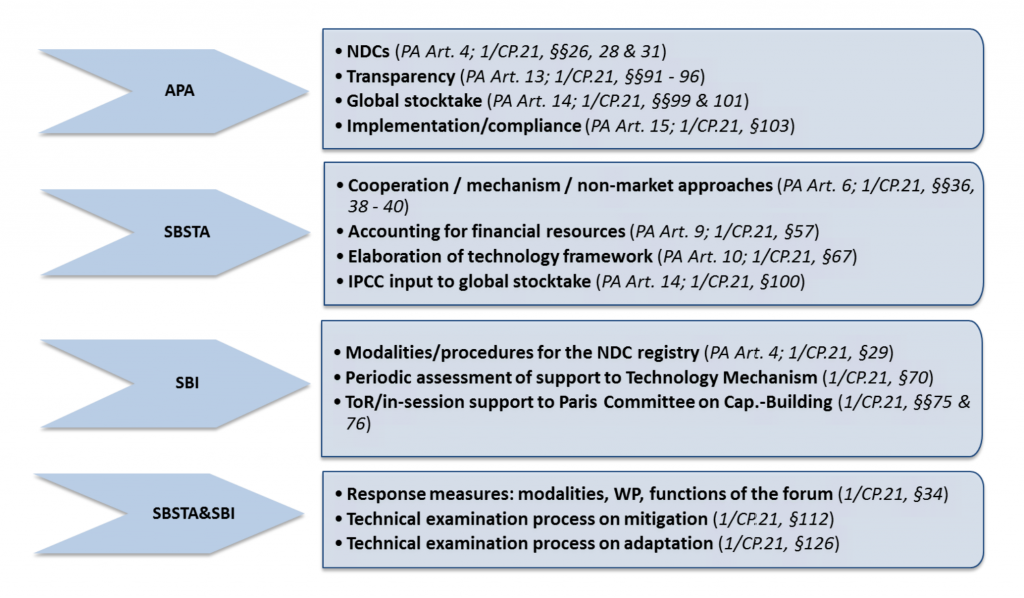The Next Challenge: How To Make The Paris Agreement Work
Post-Paris climate negotiations are focusing on turning national climate plans into on-the-ground climate action, says Gus Silva-Chavez, a program manager at Forest Trends, Ecosystem Marketplace’s publisher. Here, he lays out initial steps nations will be working on at the talks happening this week in Bonn in order to move forward with implementation.

Originally posted on the Forest Trends blog.
16 May 2016 | As important as the Paris COP was in delivering a historic climate agreement, the biggest challenge now is putting the Paris Agreement (PA) to work — or “operationalizing” it — in a quick manner so that countries can begin implementing their national climate plans, known as National Determined Contributions (NDCs).
That daunting task first falls to climate negotiators meeting in Bonn, Germany this week, where they’ll begin to hammer out some of the details of the PA and attempt to agree on specifics around key issues such as transparency and the rules for how carbon trading should be done.
What is on the Bonn agenda?
Current COP Co-President Ségolène Royal laid out a vision for how to take the PA forward and operationalize it in a recent “reflections note.” The big question is how to take the heart of the agreement, the NDCs, and turn them into the right set of government policies and investment plans that generate the necessary levels of mitigation and adaptation, and finance.

In addition to the normal process, a new negotiation track will be launched: the Ad Hoc Working Group on the Paris Agreement (APA). Different components of the PA will be sent to various bodies of the UN Framework Convention on Climate Change (UNFCCC), including the ones devoted to Science and Technology (SBSTA, in UN shorthand) and to Implementation (SBI). The handy visual guide pictured above can be found here.
NDCs (covered under Article 4 of the PA), Transparency (Art. 13), Global Stocktake (a collaborative, regular assessment provided for under Art. 14), and Implementation/Compliance (Art. 15) will be negotiated under the newly launched APA. Market mechanisms – like cap-and-trade systems — and non-market ones (Art. 6) will be negotiated under SBSTA, while modalities and procedures for registries (rules for keeping track of NDCs, Art. 4) will be under SBI. The full overview agenda is available here.
The key outcome for the Bonn meeting will be to decide on a balanced and coherent approach for moving forward: resolving how to structure the negotiations in 2016, identifying additional work that is needed, and starting to agree on a flexible set of rules and guidelines for the implementation of the PA.
Using transparency to spur ambition
A new interim NDC registry was recently launched to increase transparency and provide a glimpse into how countries intend to meet their PA climate pledges. There will be a high-level event in Bonn that tackles how to move forward with climate plans, billed by the UNFCCC as “an informal space where different stakeholders will have the opportunity to share their vision for international cooperation and support in preparing, implementing and monitoring NDCs.” Countries need to provide more details on how exactly they will meet their NDCs: namely, what new government policies will be needed to achieve their climate goals, and how they can attract the private sector cooperation and investment needed to put them on a low-carbon development path.
Although countries should start work on implementation as soon as possible, there is still a need for additional negotiations to iron out the details, and this is why Bonn and subsequent climate meetings are still relevant.
When does the Paris Agreement enter into force?
As of May, almost 180 countries have signed the PA but only 16 countries have ratified it. The magic threshold for the Agreement to enter into force and come alive is when it is ratified by 55 countries that combine for 55 percent of total global emissions. There are some indications that key countries, including the US and China, want this to happen as soon as possible.
Forest Trends on the ground
Forest Trends staff will be in Bonn following the negotiations, in particular the issues under the APA and SBSTA. Forest Trends has long supported a strong REDD+ mechanism, as well as the use of market mechanisms in general. There are clearly many moving pieces, but no Earth-shattering decisions are expected to come out of Bonn; this is primarily an agenda-setting meeting. Nonetheless, we support an open and transparent process that has the support of countries and stakeholders, and that can pave the way for PA implementation as soon as possible.
We hope to see progress on a path forward this week in Bonn. If you need a reminder of why that clearly defined path is so urgently needed, watch this animation:
Spiralling global temperatures from 1850-2016 (full animation) https://t.co/YETC5HkmTrpic.twitter.com/Ypci717AHq
— Ed Hawkins (@ed_hawkins) May 9, 2016
Gus Silva-Chávez is the REDDX program manager at Forest Trends. He has worked on REDD+, land use, agriculture and climate issues for 15 years.
Please see our Reprint Guidelines for details on republishing our articles.

